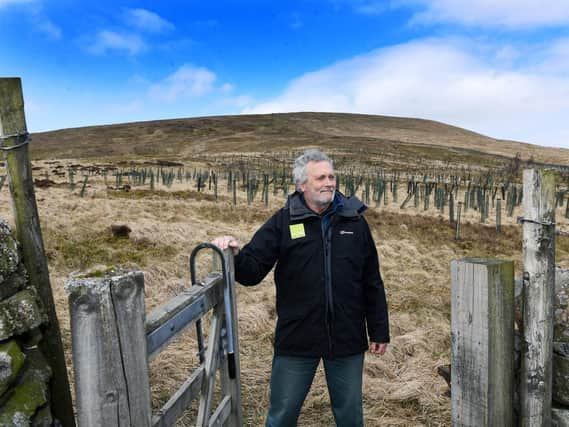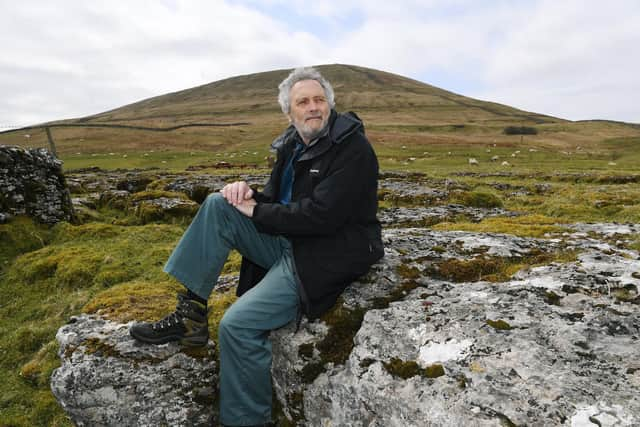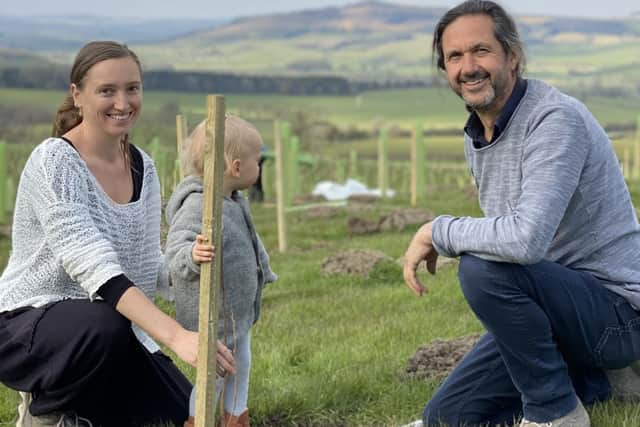How Ingleborough and Broughton Hall are leading Yorkshire's rewilding drive


When Andrew Hinde arrived for his first day of work at Ingleborough’s National Nature Reserve 20 years ago, the slopes around Yorkshire’s second highest peak – and most walkers’ favourite – looked a little different.
Bearing the scars of decades of overgrazing, the natural habitat had been visibly devastated. The once rich heather on South House Moor had all but gone and had taken with it the populations of red and black grouse. Many of the peat bogs, now seen as playing a key role in the battle against climate change, had also been badly damaged and the area’s native plant species were conspicuous only by their absence.
Advertisement
Hide AdAdvertisement
Hide Ad“People tend to think the landscape around here has been the same for centuries, but that’s not true,” says Andrew, who is now manager of the reserve designated a Site of Special Scientific Interest. “Back then, there were places on the moors which were completely bald.”


A few years earlier Ingleborough had embarked on a rewilding scheme, which was underpinned by some lofty ambitions. According to a briefing document produced in the late 1990s, the aim was to demonstrate that an “un-farmed landscape is not the ‘untidy, derelict’ landscape of popular myth but one rich in wildlife, with an attractive wilderness landscape. A place of spiritual significance”.
Today the Ingleborough rewilding project is one of the longest-running in the country, but as it embarks on the next phase, Andrew admits it hasn’t been without its challenges.
With the area often exposed to freezing temperatures and biting winds, the reintroduction of native species has been a painstaking process and on more than a few occasions the team’s best-laid plans have been undone by herds of roe deer mistaking newly planted saplings for a free lunch.
Advertisement
Hide AdAdvertisement
Hide Ad“Honestly, they can destroy weeks of hard work in minutes and there is absolutely nothing you can do about it,” admits Andrew. “However, the deer aren’t the only issue and the climate has probably been the biggest obstacle to overcome. Up here, the average year-round temperature is 9C. To get anything established at an altitude of 400m is very difficult; you have to be patient and you have to be prepared for some of what you do to be in vain.”


However, despite the elements – and those deer – the rewilding project has delivered on its original aims and this month will see the launch of the Wild Ingleborough initiative.
A partnership between the reserve and numerous other organisations, including the World Wildlife Fund and the University of Leeds, the aim is to use the lessons already learnt from rewilding to restore even more of Ingleborough’s natural habitats.
“Rewilding isn’t a quick fix, but two decades on it has had a very visible impact on Ingleborough,” says Andrew, who grew up in nearby Ingleton. “There is heather where none previously existed, peat bogs have been restored and we have reintroduced a significant number of native trees and shrubs.
Advertisement
Hide AdAdvertisement
Hide Ad“As a result, the vole population is now enormous, there has been a significant rise in the number of raptors and there have even been sightings of black grouse which were last seen here in the 1950s.
“It has been hard work and we couldn’t have done it without a loyal team of volunteers who have helped us with everything from tree planting to repairing the 28 miles of dry stone wall. It’s incredible really to look back and see just how far we – and the landscape – have come.”
According to Alastair Driver, founder of Rewilding Britain, Ingleborough is a shining example of what can be done with hard work and a lot of patience.
Launched in 2015, the organisation is a campaigning voice for natural conservation projects which it believes are key to reversing the effects of intensive farming, overgrazing and the use of pesticides while at the same time combating climate change.
Advertisement
Hide AdAdvertisement
Hide AdBy restoring these natural habitats, Rewilding Britain estimates that annually 47 million tonnes of CO2 could be captured, the equivalent of 10 per cent of the UK’s current greenhouse gas emissions.
“In many ways the team at Ingleborough were ahead of their time,” says Alastair. “Back in the 1990s they thought, ‘You know what, we are going to do things differently and allow nature to take its course’. It was a leap of faith, but one that has really paid off.”
There are currently 23 large-scale rewilding projects in operation across the country and one of the latest to launch also happens to be in Yorkshire.
While some refer to Roger Tempest as lord of the manor, he prefers to describe his role at Broughton Hall, near Skipton, more simply as “custodian”.
Advertisement
Hide AdAdvertisement
Hide AdSince taking over at the helm of the historic estate some 30 years ago, the 56-year-old has been determined to write a new chapter in its history, one which is unashamedly forward-thinking. Old buildings have been converted into a business park, renowned architect Michael Hopkins was brought in to design the cafe and events venue, Utopia, and more recently a well-being and retreat centre known as Avalon has been added to the mix.
The rewilding project, which also happens to be the biggest private tree planting scheme in the country, is the latest initiative to put nature at the heart of an estate which has been in the Tempest family for 900 years.
“Did you know that in the Craven district there is just six per cent tree cover?” says Roger. “The national average is 10 per cent, but even that compares badly to the rest of Europe where the figure stands at between 20 to 30 per cent.
“Before we started rewilding, the hillsides were like the surface of a billiard table and the more I looked at them, the more I realised we had to change that.”
Advertisement
Hide AdAdvertisement
Hide AdThe seeds of the rewilding project were sown some years ago by Roger’s partner, the photographer and artist Paris Ackrill, who had read about a similar scheme and believed it would be a perfect fit for Broughton Hall.
The aim is to rewild 1,100 acres, approximately one third of the estate, and the first phase, which has seen the planting of 230,000 trees, was completed just before Easter. Ultimately, the couple hope to follow the lead of the Wilder Blean project in Kent by introducing rare breeds to the grounds, including wild bison, last seen in Britain 6,000 years ago.
“This is a long game,” says Roger. “It will be at least five years before we can remove the first of the plastic tree guards and it’s only then that we will be able to start thinking about bringing back the rare breeds.
“The aim is to return the landscape to how it used to be and while there is lots to do, I hope the people who live locally and those who come to visit the estate are already starting to notice the difference.”
Advertisement
Hide AdAdvertisement
Hide AdThe plans are part of Broughton Hall’s wider mission to reconnect visitors with the natural environment through promoting foraging, forest bathing and wild swimming.
“Nature is medicine,” adds Roger. “In the last year more of us have come to realise how beneficial it is to spend time in green spaces. It’s good for the soul and I hope that the rewilding project will allow even more people to benefit from this corner of Yorkshire.”
Support The Yorkshire Post and become a subscriber today. Your subscription will help us to continue to bring quality news to the people of Yorkshire. In return, you'll see fewer ads on site, get free access to our app and receive exclusive members-only offers. Click here to subscribe.